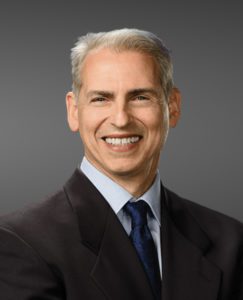
The consequences of rear-end collisions can range from minor to severe, depending on the speed of the vehicles involved, their weight, and the point of impact. A minor rear-end collision might result in little more than minor scratches and dings to the vehicles and no injuries. This happens when the speed of the vehicles is low, and the vehicles are lighter in weight.
On the other hand, a rear-end collision could result in serious or even fatal injuries and significant property damage. This often occurs when the speeds are high, the crash involves a commercial vehicle, or if the point of impact is outside a vehicle’s crumple zones.
If you’re injured in a rear-end crash, you should contact an experienced car accident lawyer right away. Your lawyer could investigate your accident, determine who is liable for your injuries, and help you seek fair compensation for your medical bills, lost wages, vehicle repairs, and other losses.
Here, we’ll discuss why rear-end collisions occur, how frequently they happen, and how you could seek compensation with the help of a car accident attorney.
Why You Need to Hire a Rear-End Collision Lawyer
Too many people either do nothing or try to seek compensation on their own after rear-end collisions. You don’t have to do that, nor should you.
If you hire a lawyer to handle your rear-end collision claim, you could save yourself from the stress, frustration, and time it takes to deal with the insurance companies and recover the compensation you need to put the crash behind you.
If you’ve never hired a lawyer, you might be unsure how to choose the right one.
You should look for these attributes in a good lawyer:
- Experience. You should hire an attorney for personal injury with extensive experience handling car accident claims, and preferably, rear-end collision cases like yours.
- Responsiveness. When you have a question or an issue, you’ll want an attorney who will return your calls and emails promptly and keep you up to date with your case’s developments.
- Compassion. If the crash injured you and altered your life, you might experience intense feelings such as sadness, anger, and fear during the legal process. If an attorney does not seem to care about you or your case, you should choose someone who does.
- Transparent fee structure. An experienced attorney will be upfront about how they get paid. Many injury attorneys work on a contingency fee basis, which means they only get paid if they succeed in securing compensation for you.
- Proven record of success. A good car accident attorney will have a track record of settlements and verdicts to show as a testament to their skills and willingness to seek the full and fair compensation you deserve, whether at the negotiating table or the courtroom.
How Often Do Rear-End Collisions Occur?
According to the National Highway Traffic Safety Administration (NHTSA), rear-end collisions occur more frequently than any other type of crash, accounting for approximately 39 percent of all crashes.
Data from a rear-end crash analysis conducted by the NHTSA reveal additional insights on the most frequent characteristics of rear-end crashes:
- Males are 1.2 times more likely to be in rear-end crashes than females, accounting for 75 percent of rear-end crashes. On the other hand, females were 1.3 times more likely to be in near-crashes (events that require the driver to make a rapid, evasive maneuver to avoid a crash).
- Drivers ages 25 to 34 accounted for 33 percent of rear-end crash participants. They were 1.9 times as likely to be in rear-end collisions as other age groups.
- While most rear-end crashes occur in clear weather and on dry, straight roads, inclement weather and adverse road conditions made it more likely that a crash or near-crash would occur.
- More rear-end crashes occurred at junction locations, such as intersections or entrance-exit ramps. Over 60 percent of crashes occurred in intersections or intersection-related areas.
How Dangerous Are Rear-End Collisions?
Of the 1.5 million rear-end collisions that occurred nationwide in one recent year, 2,428 resulted in a fatality, whereas 417,062 crashes resulted in injuries, according to NHTSA data. Across the country, 1,633 people died in rear-end crashes, and 483,675 suffered injuries.
In California, 358 people died in rear-end crashes. Another 91,091 suffered injuries, including 536 people with severe injuries.
Why Do Rear-End Collisions Happen?
The most common cause of rear-end collisions is driver inattention or failure to pay attention to the road ahead.
This can include:
Distracted Driving
The NHTSA rear-end crash analysis found drivers routinely engaged in distracting behaviors, such as texting or talking on their cell phones. Of the 6,177 rear-end crashes with a lead vehicle, 87 percent involved a distracted driver. Whatever the reason, drivers looking away from the forward roadway took an average of 600 milliseconds longer to brake than drivers whose focus was straight ahead.
What’s worse, 47 percent of crash-involved drivers failed to take any action to avoid a collision. The data also shows that 40 percent of drivers were looking out of the front windshield at the time of the crash, demonstrating that looking ahead does not necessarily mean that a driver can avoid a rear-end crash if otherwise distracted.
Common causes of driver distraction include:
- Talking, texting, scrolling social media, or otherwise using a smartphone will driving
- Daydreaming
- Grooming
- Eating or drinking
- Reaching for an object in the vehicle
- Talking to another passenger
- Adjusting car controls, such as climate or entertainment system
- Rubbernecking
Following Too Closely
When a driver is following the vehicle in front of them too closely, it can be difficult or nearly impossible to avoid a collision if the forward car stops or decelerates. In the NHTSA analysis, most rear-end crashes involved a stopped lead vehicle (59 percent), whereas 22 percent occurred when the lead vehicle was decelerating. More near-crashes occurred when the forward vehicle was decelerating.
Speeding
According to the National Safety Council, speeding is a factor in 29 percent of all traffic fatalities. Drivers who are speeding will need more time and distance to come to a stop and avoid a rear-end collision. A vehicle traveling 55 miles per hour takes the length of a football field to stop, whereas at 30 miles per hour, it only takes half a football field.
Impaired Driving
Alcohol, drugs, or fatigue diminish a driver’s reaction time and spatial judgment, increasing their risk of getting in a rear-end crash. In California, rear-end collisions accounted for 13.5 percent of alcohol-involved accidents.
Inclement Weather or Adverse Road Conditions
Adverse conditions, such as inclement weather or road hazards, increase the risk of a rear-end collision. In the NHTSA analysis, cloudy, rainy, and snowy weather caused more crashes than near-crashes. This means that drivers should adjust their speed, following distance, and attentiveness in such conditions.
Common Injuries Caused by Rear-End Crashes
Rear-end crashes injure hundreds of thousands of Americans annually.
Some of the most commonly-reported injuries from rear-end accidents include:
- Whiplash: When the head and neck are suddenly thrown forward and then snapped back after a rear-end crash, the muscles and ligaments in the neck can strain or tear. Symptoms of whiplash might not appear for hours or even days after the accident.
- Back injuries: Rear-end collisions can cause injuries to the back, such as sprains, strains, or herniated discs.
- Head injuries: A blow to the head in a rear-end collision can cause concussions or traumatic brain injuries (TBI).
- Chest injuries: The force of a rear-end collision can cause injuries to the chest, such as broken ribs or internal injuries.
- Spinal cord injuries: The force of a rear-end collision can cause injury to the spinal cord, which can result in partial or complete paralysis.
- Psychological injuries: Rear-end collisions can lead to post-traumatic stress disorder (PTSD) or depression.
Is the Rear Driver Always Responsible for a Rear-End Collision?
You might assume that the rear driver is always responsible for a rear-end collision. While that is often the case, other drivers or entities could also be responsible.
Potentially liable parties for rear-end crashes include:
- Rear driver. In many cases, the rear driver is responsible for a rear-end collision because they are the entity that initiated the crash. If the rear driver was texting on their phone or speeding, a rear-end collision victim could hold them liable for their injuries.
- Lead driver. In some incidents, the lead driver could be responsible for a rear-end collision. Suppose a passenger distracts the lead driver, and they do not see a pedestrian crossing at a crosswalk ahead. They slam on their brakes to avoid hitting the pedestrian, and the rear driver hits the back of their vehicle. In this scenario, the lead driver might be at fault.
- Another driver. Another driver in a car that didn’t crash may have caused the accident. Consider a scenario where Driver A pulls out abruptly in front of Driver B, who must slam on their brakes to avoid a collision. Driver C follows behind Driver B and rear-ends them. In this scenario, Driver B and C could pursue Driver A for compensation for their injuries.
- Multiple drivers. Under California law, multiple entities share fault for an accident. Consider again the example of Driver A pulling out in front of Driver B, who gets rear-ended by Driver C. If Driver C followed too closely to avoid the collision, Driver B could pursue both Drivers A and C for compensation. The court would assign each driver a percentage of fault for the accident, which would dictate how much compensation they must pay to the victim.
- A company. If a driver causes a rear-end collision while on the clock, you could pursue compensation from their employer under the vicarious liability principle. Under this principle, an employer might be responsible for their employee’s carelessness.
- A government agency. If a rear-end collision occurred because of a government agency’s negligence, the victim could pursue that agency for compensation. Suppose an inoperable traffic light causes a rear-end collision. The government agency responsible for maintaining that light could face a claim for damages.
How Much Compensation Can I Recover for My Rear-End Collision Injuries?
With a knowledgeable car accident lawyer on your side, you could seek compensation for:
- Hospital and doctor’s bills
- Physical therapy expenses
- The cost of medications, medical supplies, or medical devices
- Lost wages from missing work
- Loss of future earning capacity due to a long-term disability
- Physical pain and suffering and mental anguish
How to Protect Your Injury Claim After a Rear-End Collision

Mickey Fine, Rear-End Collision Attorney in Bakersfield
If a careless, reckless, or otherwise negligent driver hit and injured you in a rear end collision, they might owe you significant compensation. Through an injury claim or lawsuit, you could recover the money you need to pay your bills, recoup lost wages, repair your vehicle, and move on with your life.
To protect your claim:
- Check for injuries and get medical treatment immediately if you’re hurt
- Call the police and report the accident
- Exchange contact and insurance information with the other driver
- Take pictures or video of the scene and any damage to both vehicles
- Get a copy of the police report since this can be useful when filing an insurance claim
Speak with a Bakersfield personal injury lawyer as soon as possible after the crash to get started on your claim.
